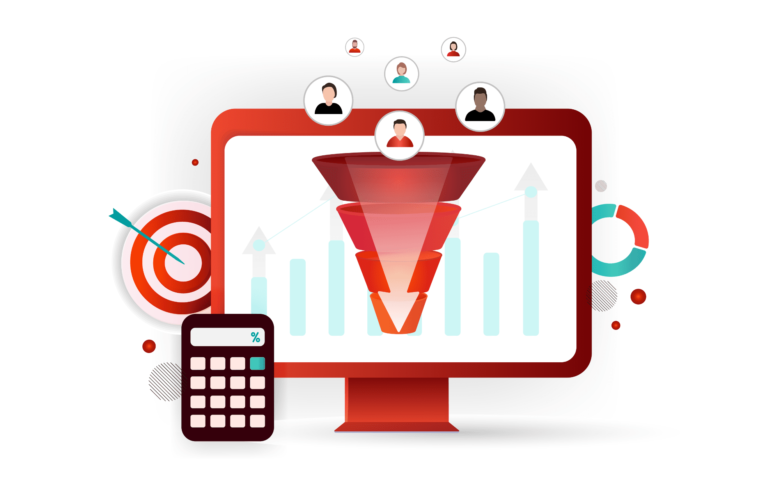A lead funnel is a systematic approach to turning prospective customers into paying ones. For B2B businesses, this can be an incredibly successful tool and often the difference between success and failure.
It’s essential to comprehend your target audience’s behavior at each stage of the sales funnel in order to craft content that appeals directly to them. This requires using various marketing methods, from SEO and paid advertisements to social media tactics.
Lead Capture

Source: justuno.com
To turn visitors into customers, you need to capture their information. Although this can be a challenging step, it can be done.
Lead capture is an essential step of the lead funnel and should be a top priority for marketers. To ensure successful lead capture, ensure your forms are designed correctly and request only accurate information from visitors.
Once you determine the most efficient lead capture strategy for your business, there are a variety of tactics available. Popular choices include multistep forms, gamification, and email marketing.
Multistep forms are straightforward and effortless to implement. They break long forms into multiple views, helping users avoid form fatigue and ensuring they provide you with all of your information promptly.
Enhancing conversion rates with quizzes on capture forms is another effective strategy to boost conversions. These interactive exercises offer audiences a fun way to engage and help collect data for personalization purposes.
Popups are an effective way to showcase your capture form on a website. They can be highly effective for converting sales leads since they capture people’s attention and encourage them to take action. You can click here for more information about these types of ads.
Popups can be an effective tool for businesses with high product conversion rates to offer discounts or free products in exchange for customer contact information. This strategy increases customer engagement and gives them a sense of getting something valuable in exchange for their information.
When displaying a popup message to visitors, make sure it is unmistakable and easily understood. Doing this will enable them to quickly respond to your call-to-action and complete the form.
Finally, keep your form short and sweet. Studies show that longer forms tend to have lower conversion rates than shorter ones – especially for low-funnel offers like free trials or downloadable content.
Lead Nurturing

Source: abstraktmg.com
Lead nurturing is an essential marketing tactic to motivate potential customers down the sales funnel. It involves sending tailored content to prospects based on their interests or needs, ultimately leading them to become buyers and promoters.
According to Forrester Research, companies who employ these practices see approximately 50% more conversions than those who don’t. Furthermore, this strategy helps businesses foster trust with their target audience and fosters a symbiotic relationship that ultimately results in increased sales.
Nurturing can be accomplished using various tactics, such as layered forms or progressive profiling (which collects prospect information gradually and undetectably). A successful lead nurturing strategy begins with emails that introduce contacts to your company and educate them about your products and services.
Once your automation campaigns have been established, you can leverage them further along in the buyer’s journey with automated campaigns such as drip campaigns, retargeting ads and other communication channels.
A successful strategy is to send a series of emails and messages to potential customers based on their stage in the funnel. You can then monitor their engagement with these touchpoints, adjust messaging, timing, and frequency until you see improvements.
Create a strategy tailored to your business. This should include selecting an objective, message flow, content offers and communication channels so that the right message reaches your prospect at precisely the right time. You can click the link: https://www.clickfunnels.com/blog/lead-magnet-funnel/ for more tips on how to move customers through the lead funnel. There is a lot to learn from this sales tool.
You can also utilize a specialized scoring tool to assess the value of each prospect. This will assist in identifying the most qualified leads and giving your team all of the information necessary for making an informed decision during the sales process.
Lead Conversion

Source: octopuscrm.io
Lead conversion is the process of turning a prospective lead into a paying customer. It involves multiple marketing and sales tactics such as behavior automation, retargeting, email nurturing and more to achieve this conversion.
The initial step in a successful lead conversion is to identify your buyer persona. This is an extensive description of your target audience’s needs, expectations, motivators and pain points. Once you know these individuals better, you can craft a strategy that will convert them into customers.
Once your content is published, you can use it to attract leads through various online platforms like LinkedIn, Google and Facebook. Quality content is essential as it helps people get to know you better and trust your brand more fully.
Turn your leads into customers by satisfying their needs and showing the quality of your products. A glowing testimonial or case study from a satisfied customer is also an effective way to attract new business.
You can use a CRM to monitor your lead’s journey through the funnel, including their conversion rate and lifetime value. Doing this allows you to identify which steps in your funnel are successful and which require improvement.
Lead Management

Source: videoform.com
A successful lead management strategy is essential for companies looking to foster strong relationships and boost sales. The process of managing leads involves monitoring inquiries, connecting leads with a company sales rep, and documenting all interactions.
By scoring leads, you can quickly evaluate their interest in your product or service and assign them numerical values that indicate their level of interest. These scores help determine whether a lead should be passed along to the sales team for further processing.
This step is especially critical when your lead generation efforts involve content such as webinars or email newsletters. You want to guarantee that these emails reach your intended audience and foster trust before they even consider reaching out to you.
Lead management software can also help you track and measure the success of your campaign, increasing ROI.
